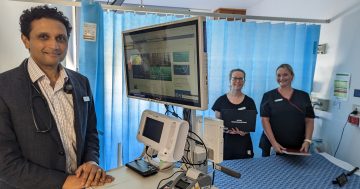
The Australian Institute of Health and Welfare’s Emergency Department Care 2014-15 report was released today and shows that ACT residents typically wait twice as long as the national average for emergency department care.
From the media release:
“The Australian Institute of Health and Welfare’s (AIHW) Emergency Department Care 2014-15 report released today has the median emergency department waiting time in the ACT at 37 minutes. Nationally it is 18 minutes,” Leader of the Opposition and Shadow Minister for Health Jeremy Hanson said.
“We also have the lowest percentage of patients seen on time at a lowly 59 percent. Across the border in NSW that figure is 81 percent while the national average is 74 percent.
“Furthermore, the report highlights that despite the fact the ACT has experienced a lower than national average increase in presentations over the last five years at 3.7 percent, we are still performing a lot worse than other jurisdictions that have coped with higher demand. Nationally the average increase in demand was 4.5 percent.”
Thoughts, Riot?



















